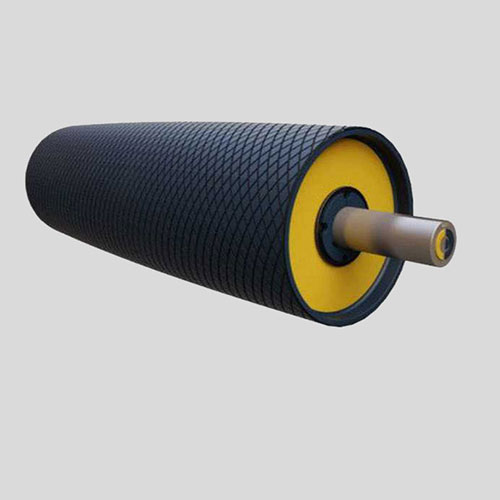
-
Call Us On
-
Mail Us On
response@stutiindustries.co.in

response@stutiindustries.co.in
 Send Enquiry
Send Enquiry
A Conveyor Pulley is a mechanical contraption, like a Conveyor belt, used to adjust the route of the belt in a conveyor system, or to move the belt, or to apply strain to the belt.
Pulleys are a lot heavier than belts and are utilized at one or the flip side of the transport or close to the drive/motor. Moreover, picking the correct Conveyor Pulley for your Conveyor can be tricky. Stuti Industries offers expert assistance.
The drum is the pulley area in direct contact with the belt. The tray has a certain surface width and diameter, which is determined by the conveyor belt type.
Stepped shafts of different diameters are used in the conveyor pulley to cover all the stresses exerted by the belt with minimal distortion. The shaft is locked between the diaphragm hubs by a locking mechanism. The shaft and pulley assembly is supported by a bearing kit located in a Plummer block. Variable shaft diameter offers high torsional resistance to applied loads.
Both ends of the drum are covered with thick round steel discs. This disc is called a Diaphragm plate. They are welded to the shells to provide additional strength to the drum
The locking components are precisely engineered elements that are mounted over the shaft and on the hub of the pulley via the end plate. The locking element works on the principle of friction, in which tightening a number of screws secures the element to the shaft and hub at the same time.
The Hub is the machine lodging welded to the endplate. The elements of the hub are related to the size of the pulley, the breadth of the shaft, and the size of the locking elements, which are significant for each errand.
Pulleys are used on the conveyor to support and divert the belt through the conveyor structure. The pulleys also provide a mechanism by which the conveyor, together with the idle conveyor belt, can be trained to operate properly. Pulleys are generally situated towards the end of the conveyor structure and at the receiving means. They serve to transmit the driving force in the conveyor and therefore are exposed to the dynamic pulling force of the belt on the conveyor. There are a few distinct pulleys for use on the conveyor, just as various plan boundaries for them performing various capacities on a similar conveyor.
The conveyor consists of two Pulleys in sequence, one head pulley and one tail pulley, with additional pulleys used depending on the structure. Standard pulleys are usually sufficient for basic applications, but engineered Pulleys are also available when compromise Pulleys are not required.
Drum pulley has the shape of a cylindrical tube or tube which allows it to be in full contact with the belt surface. Drum rollers can have grooves to increase traction and reduce the risk of slipping.
Wing Pulley Pulley is also known as a self-cleaning roller. A wing is a series of individual wings, commonly called fins, which form a continuous surface belt. It is mainly used in systems for processing heavy bulk materials.
Spiral Pulley is a combination of wing pulley and drum pulley. Because it has a spiral metal belt attached to a wing-like structure, which means that it is always in contact with the conveyor as well as during material processing.
In the early stages of cement manufacturing, the production limestone is transported by conveyor. This belt is able to withstand the weight of limestone and bring it to the point of crushing. In a later stage, a conveyor roller is used to transport crushed limestone through the conveyor pulley and side conveyor belt to the combustion point over a long distance to the combustion process in the cement plant. Packing and loading are carried out with the help of pulley wings.
Conveyor pulley in sugar mills begins loading and transporting sugarcane from raw materials from the point of entry to milling, cutting, crushing and various further uses. This process is carried out at a remote location in the sugar factory and the entire process is linked by a conveyor belt. The high carrying capacity of these belts, low maintenance costs are easy to handle and ensure easy mobility of materials
Conveyor Pulleys have proven to be valuable assets for the mining sector. The long-distance haul is very expensive without the use of strong conveyor pulleys and the role of high-quality hauling plays an important role in this mechanism. Drum pulleys are used for smooth transfer of horizontal currents and inclined masses of freshly excavated rock for further processing.
In addition to this large industry, most other manufacturing companies use conveyor pulleys for material handling, internal transportation, easy diversion, and flow changes using conveyor pulleys. The speed flexibility makes it easy to use for all other industrial conveyor pulleys when processing materials from raw material input for truly great results.
you are unsure whether a Conveyor Pulley is right for your company and how it can optimize your business for better efficiency, contact Stuti Industries. Our experienced sales team members will listen to what you need and provide you with individual design recommendations.